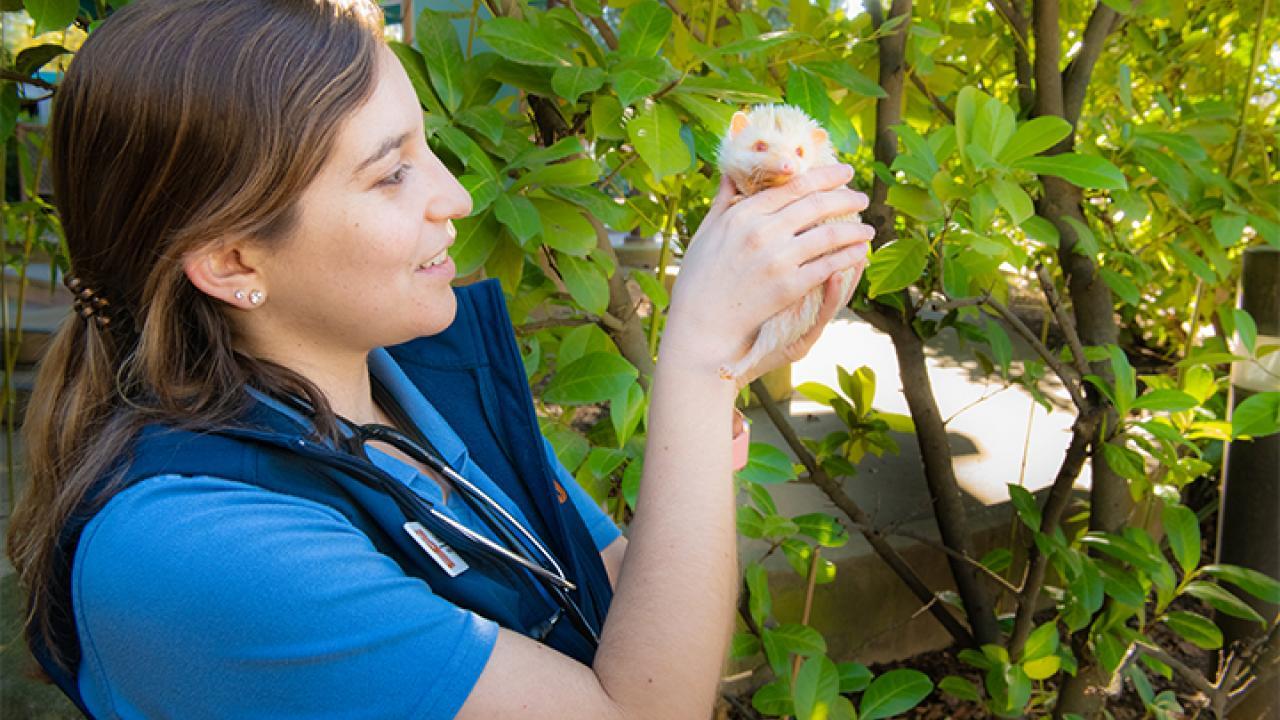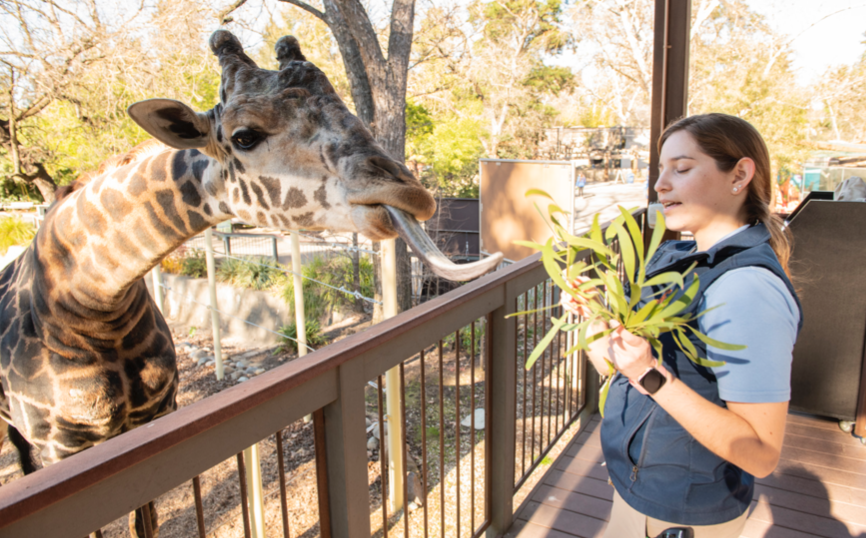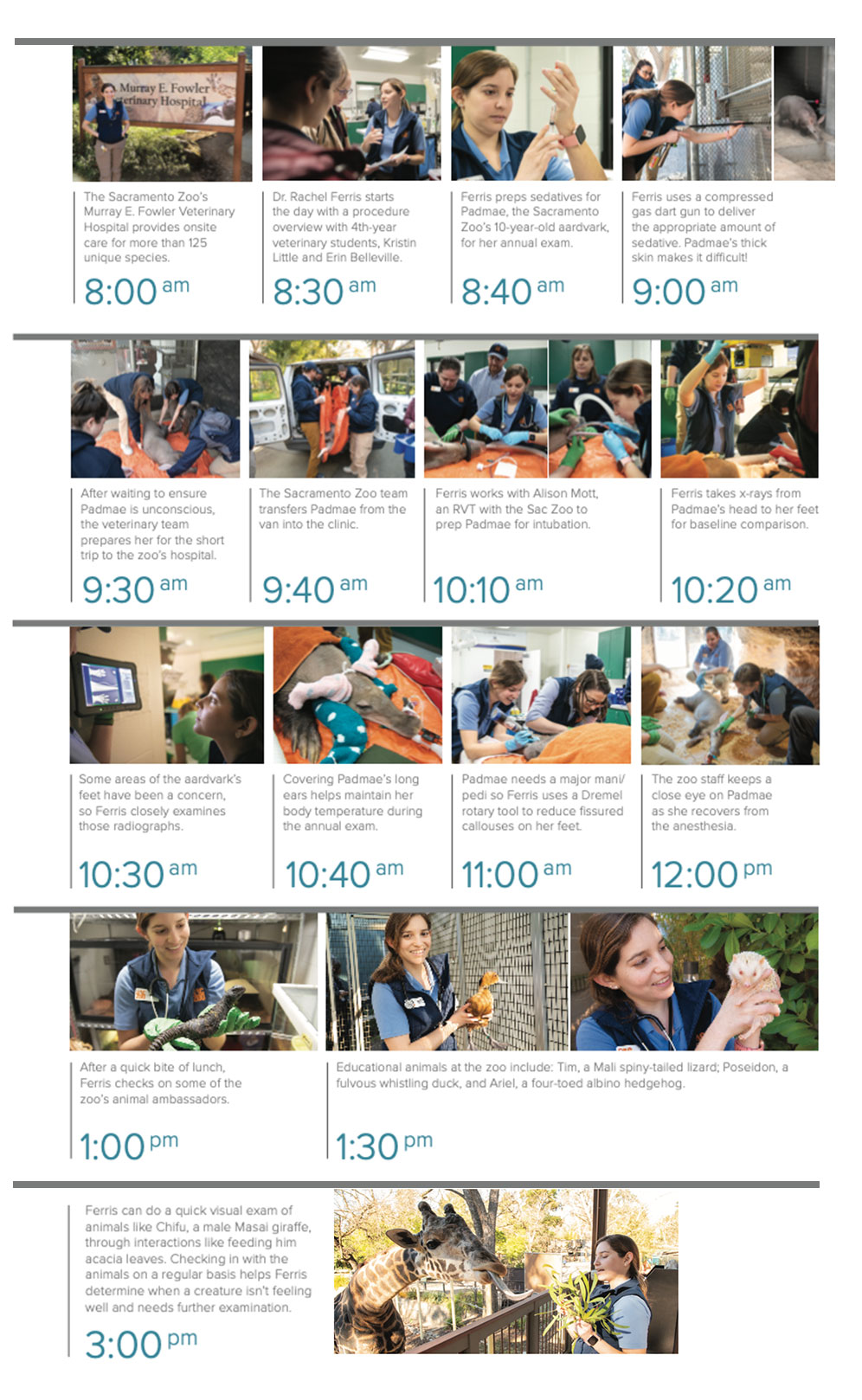
A Day in the Life
Just Another Typical Day - Rachel Ferris, 2017
Watching Dr. Rachel Ferris ’17 examine Padmae, the 10-year-old aardvark, you get the impression that she’s worked on many of these nocturnal animals from Africa. It’s not until Ferris takes a lunch break following the morning’s procedure that she lets on that she had never examined an aardvark before. It’s this cool, calm demeanor in addition to clinical and comparative medicine skills that makes Ferris well suited to her career as a zoological and wildlife veterinarian.
“I’m constantly learning about new species—and their sometimes challenging anatomy,” said Ferris, who is completing her first year of a zoological medicine residency at UC Davis where she completed her undergraduate training and veterinary school. “Working with a variety of species keeps me engaged, learning and interested. I definitely wanted a challenge; probably most zoo vets do.”
Ferris will spend her second and third years at the San Diego Zoo and San Diego Zoo Safari Park, close to where she grew up and where she went on a lot of trips and behind-the-scenes tours with her family as a kid. Those visits, and a fascination for the Jeff Corwin and Crocodile Hunter shows, fueled a passion for zoological medicine from an early age.
Thanks to an ROP course in high school on animal health, Ferris got her foot in the door early on at a local veterinary hospital as a vet assistant. From there, she followed every opportunity that would take her to the UC Davis School of Veterinary Medicine—including an internship with the Wildlife Care Association in Sacramento and volunteering with the Mercer Veterinary Clinic for the Pets of the Homeless while still an undergraduate.
“Working with a variety of species keeps me engaged, learning and interested. I definitely wanted a challenge; probably most zoo vets do.”

Ferris now finds herself mentoring DVM students in their clinical rotations at the Sacramento Zoo, thanks to a unique partnership between the zoo and UC Davis. The residency program helps train aspiring zoological medicine specialists like Ferris while allowing veterinary students hands-on experience with wildlife species. They get the opportunity to work with more than 120 unique species, from snow leopards to river otters.
“I’ve always enjoyed teaching because it pushes my knowledge as well,” Ferris said. “It’s a dual learning opportunity.”
Dr. Jenessa Gjeltema, assistant professor of zoological medicine, directs the three-year residency program and was Ferris’ mentor when she was a student.
“Rachel hit the ground running—she’s a rock star,” Gjeltema said. “It’s rewarding to see her take more initiative and be comfortable with her skill set, even though it’s a little less exciting for me, personally, standing aside while she takes the lead on cases!”
As the zoo med resident, Ferris creates procedure plans for comprehensive exams of animals like Padmae. One challenge with working on zoological species is the need for anesthesia to safely conduct these exams. During preventive health examinations like this one, the team - comprised of the zoo’s skilled veterinary technicians and onsite UC Davis veterinarians- makes use of diagnostics such as head to toe x-rays, bloodwork, and ultrasound to establish baselines of normal health while an animal is anesthetized.
“Having to find resources for each animal and determining what is ‘normal’ for each of our patients can be a challenge,” said Ferris, who started researching everything she could find on aardvark anatomy and health a week before leading the exam.
“That’s what’s rewarding about working with the zoo’s collection—we focus on cradle to grave care which requires a broader management perspective,” Ferris said. “Our goal is to provide the best animal welfare possible and to provide preventive health care that sets them up for having an excellent quality of life.”

